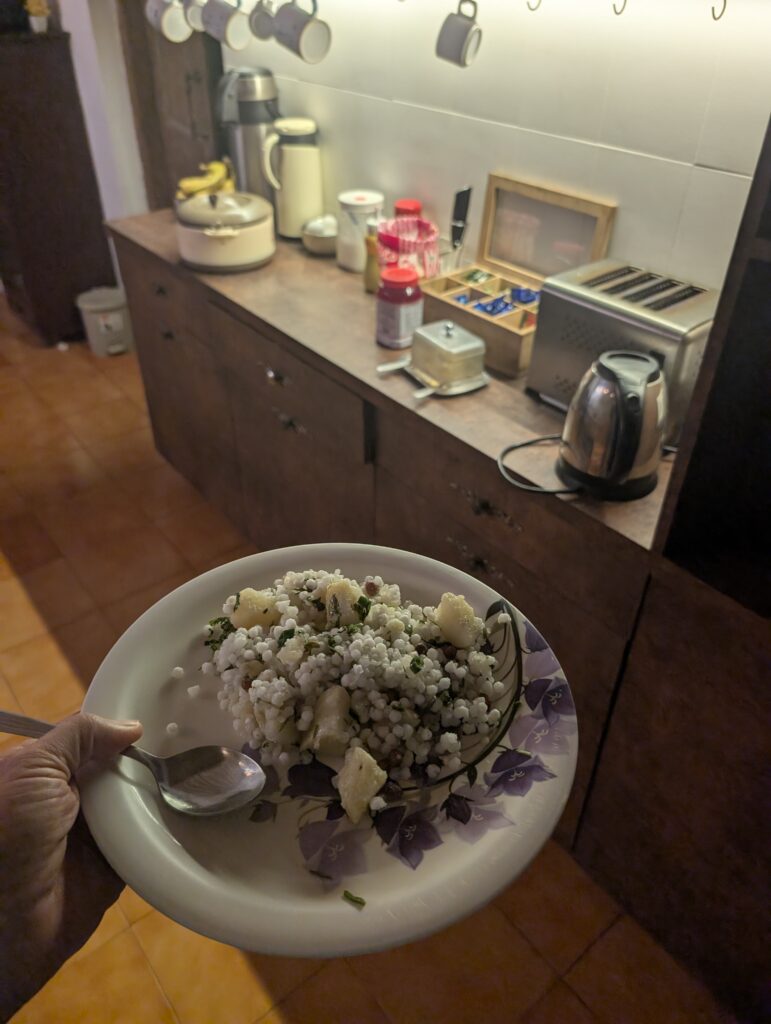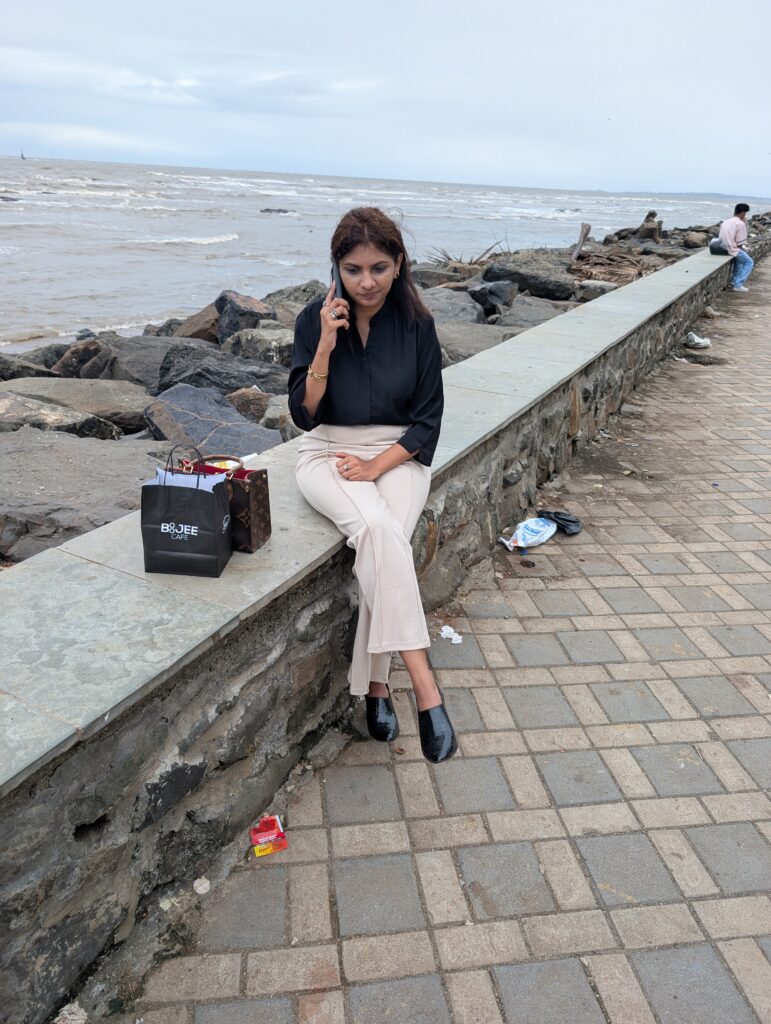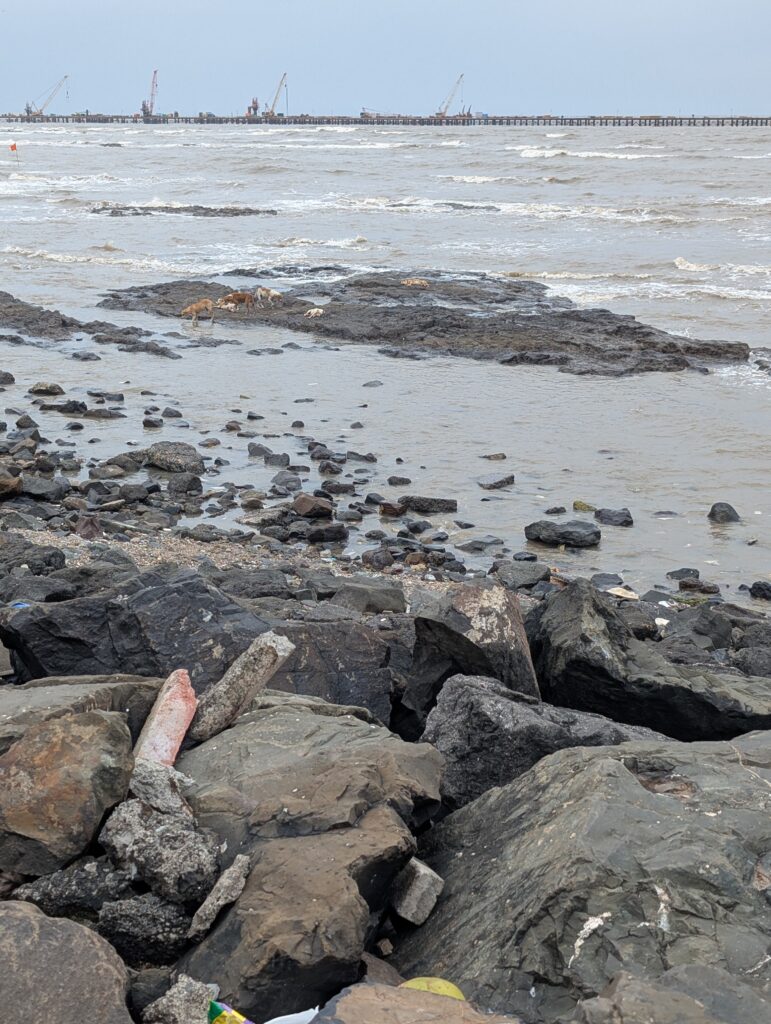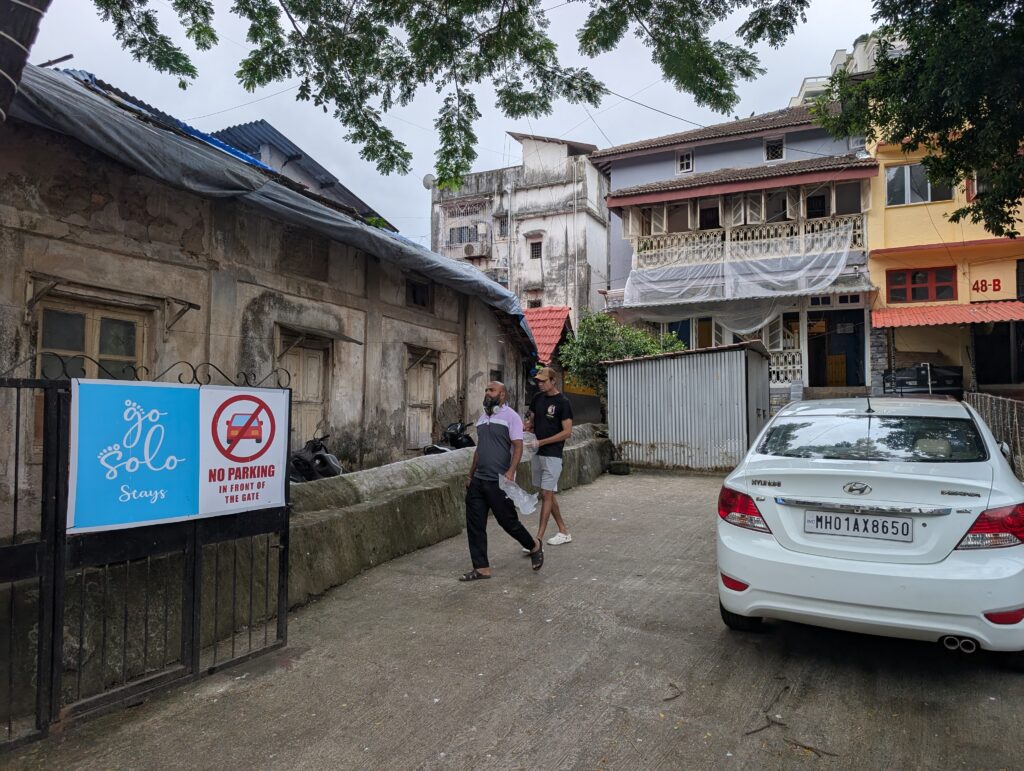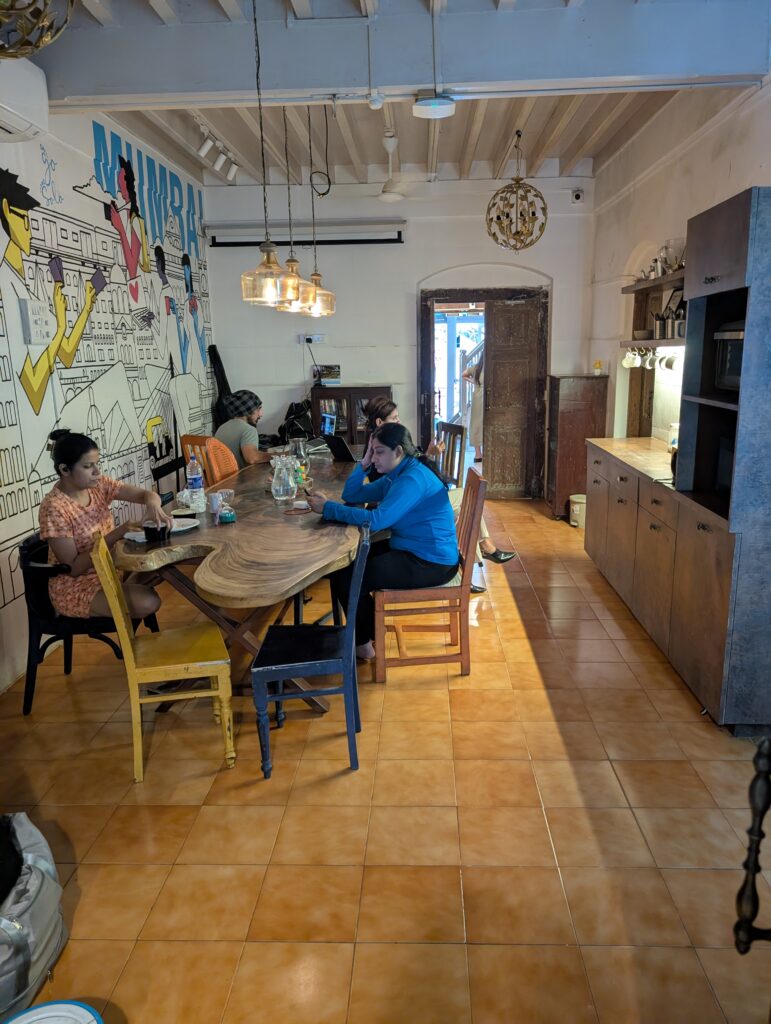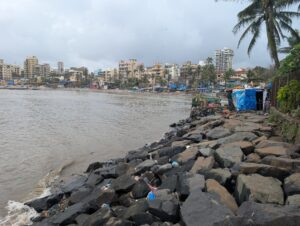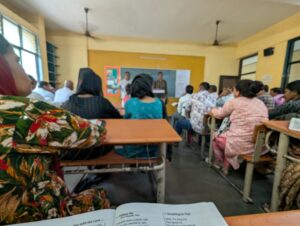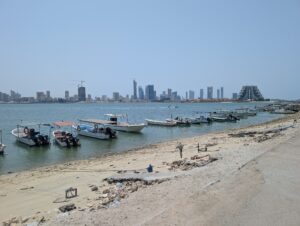Heart of India
Mumbai Wrap Up
As Tuesday was my last full day in Mumbai, I set out to clean up any other tourist sites I may have missed on Saturday. After my usual delayed start for the delicious hot breakfast, I hiked down to the bus stop to catch number 51 down to the South end of Mumbai. I did not go to the extreme end down by Colaba, but just far enough to walk to the oldest Jain temple in Mumbai.
Jainism is one of the oldest religions in India. Although the origins of Jainism are obscure, it appears to date back at least to the 8th century B.C. Like Buddhism, in its purest form, Jainism seems more like a philosophy than a religion. Rather than worshiping a particular deity, Jainism encourages parishioners to adhere to a few major principles. Jains take vows of nonviolence. They strive for honesty. They are supposed to eschew possessiveness, particularly in regard to material possessions. This is a karmic component as well – the idea that you will be reincarnated in a better or worse position, depending on how you lived your current life. The goal of all of this in the end is to reach “liberation,” which they see as freedom from the process of birth, life, death, and rebirth.
Jains do not believe the universe was created, nor has a judge or overarching ruling being. To them, the world and everything in it is eternal. They believe in demonic beings and super-mortal beings. Since Jains believe in reincarnation, these beings live and die, but are not destroyed. I am not certain how all of the small shrines in the temple I visited play into all of this. In Buddhist temples, there is always a Buddha statue. Some people meditate before the Buddha image or others in the temple. Others pray and make offerings, asking for something that seems a little less deep than peace, truth, and non-possessiveness. I assume this is just a difference in the spiritual maturity level of Buddhist practitioners. I do not have enough knowledge of Jainism to understand if their temples operate similarly.
There are about four to five million Jains around the world. Most are in India, but there are sizeable groups in the U.S., Canada, and Japan. I had never seen a Jain facility, and was interested in what their facility might look like. The temple I visited had several floors, the upper two being the primary worship locations. There were recessed areas in the inner temple with god statues in them. The statues did not look all that dissimilar to Buddhist images. In fact, I would say most of the statues in the Jain temple looked more like darker Buddhas with glowing, robotic eyes. They looked like Buddhas with C3PO eyes. I took my time walking and snapping photos. I tried to do so without disturbing any adherents. There were a few people inside meditating or praying, visiting the gods.
(Continued)
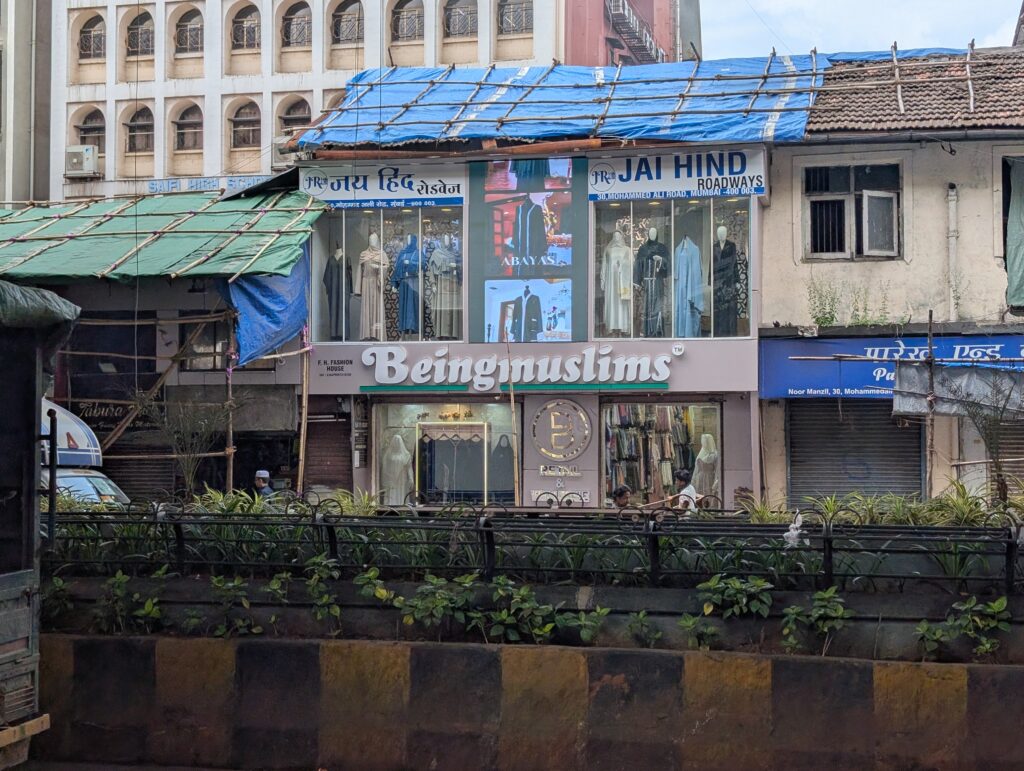
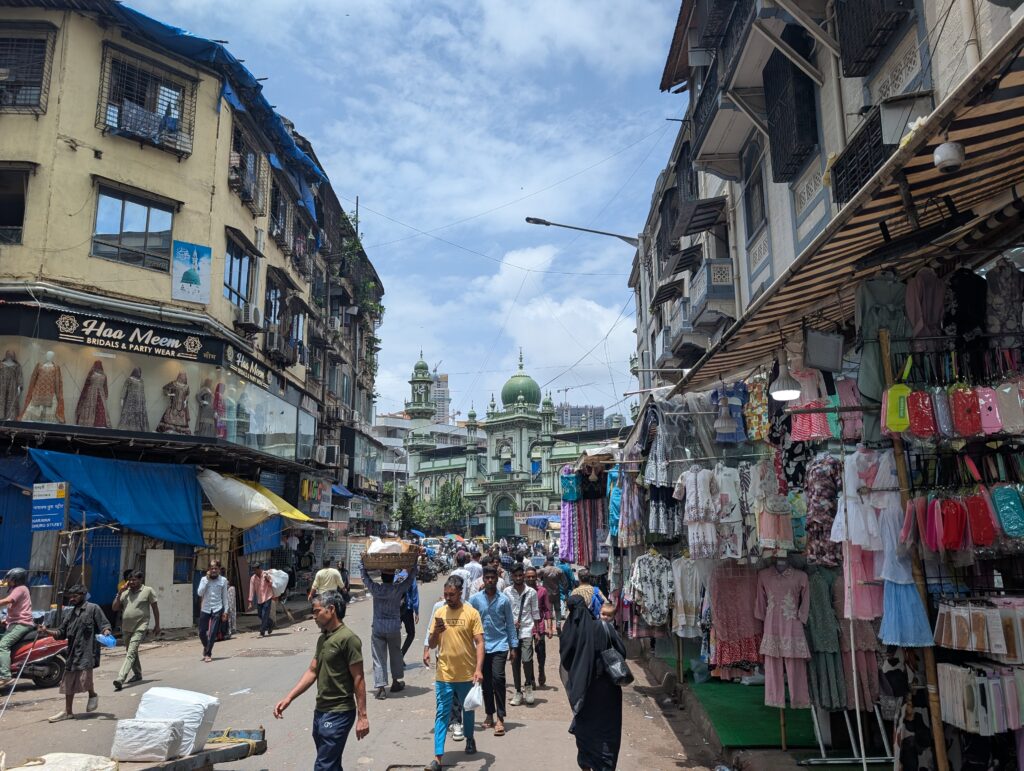

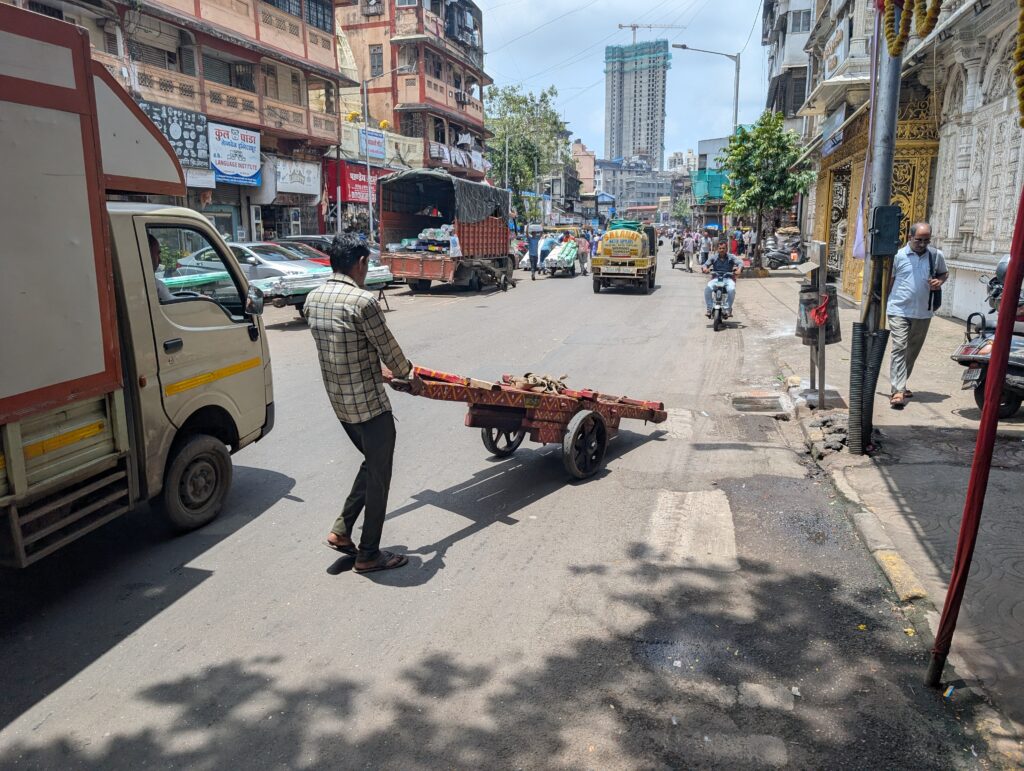
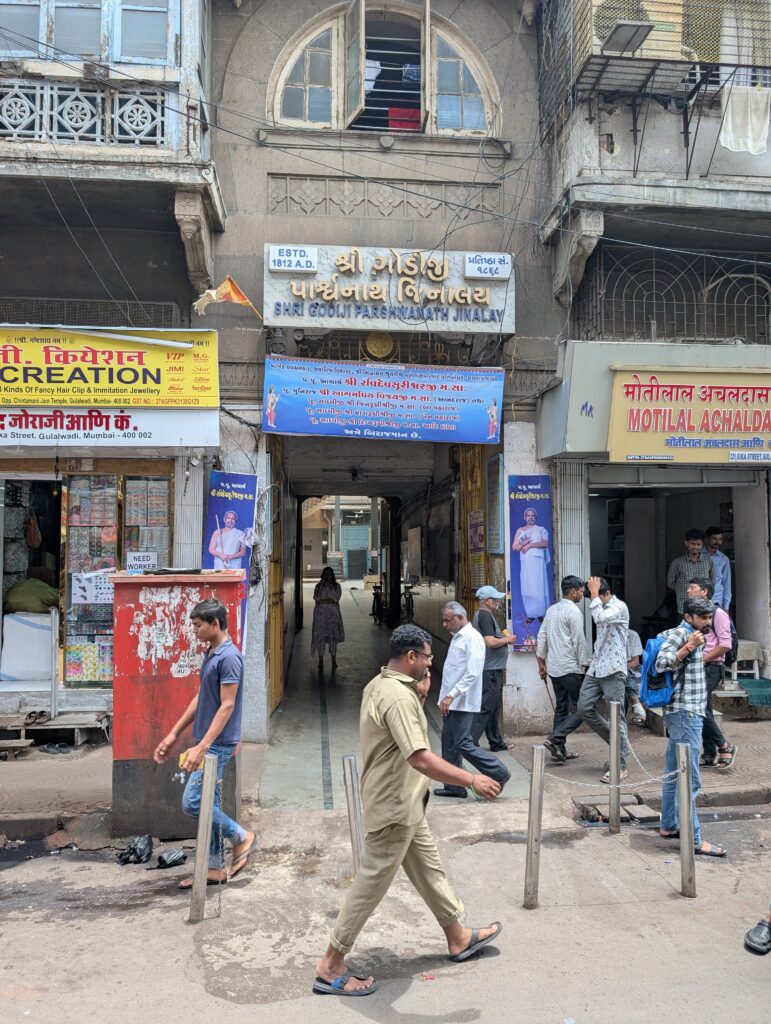
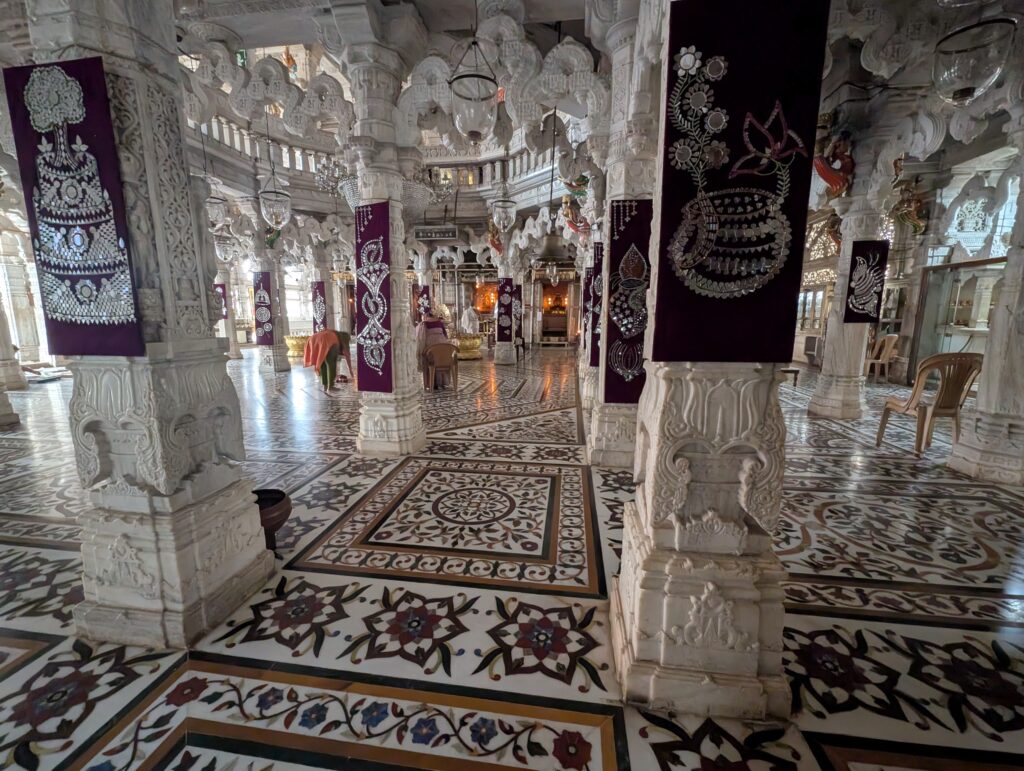
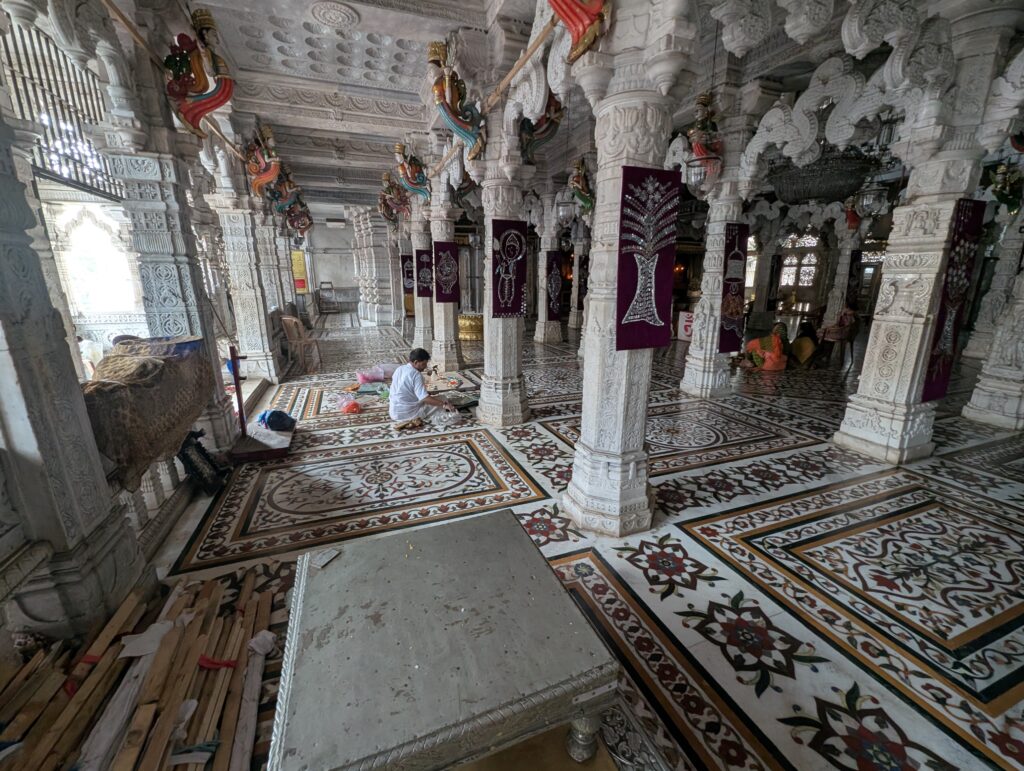
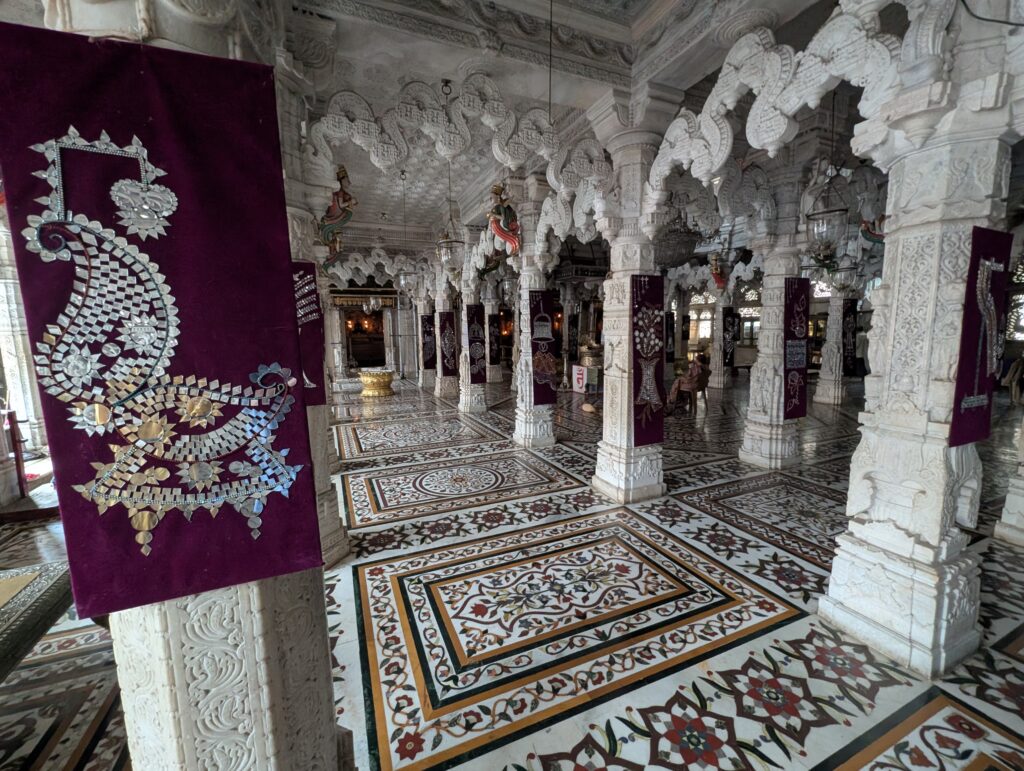
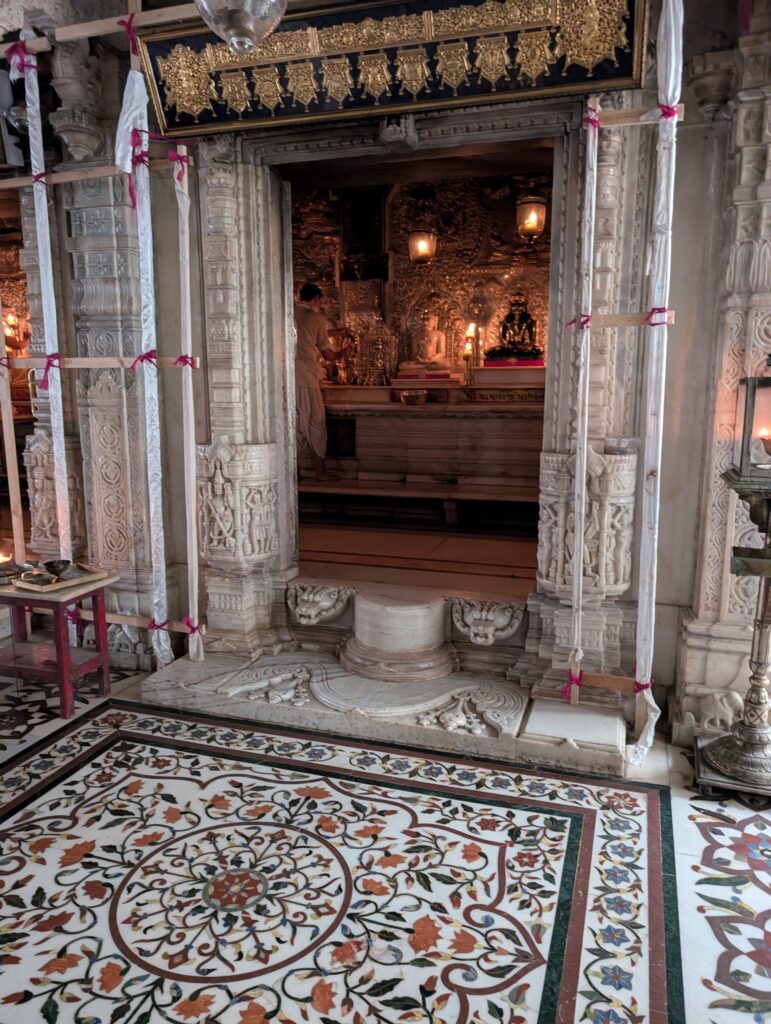


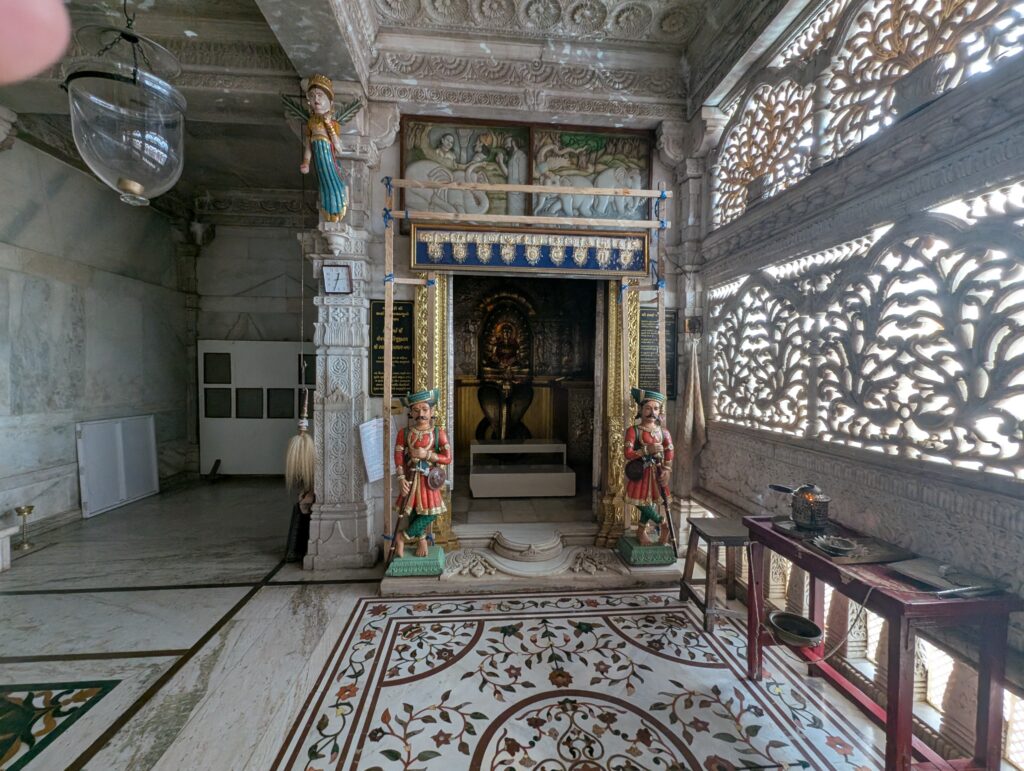
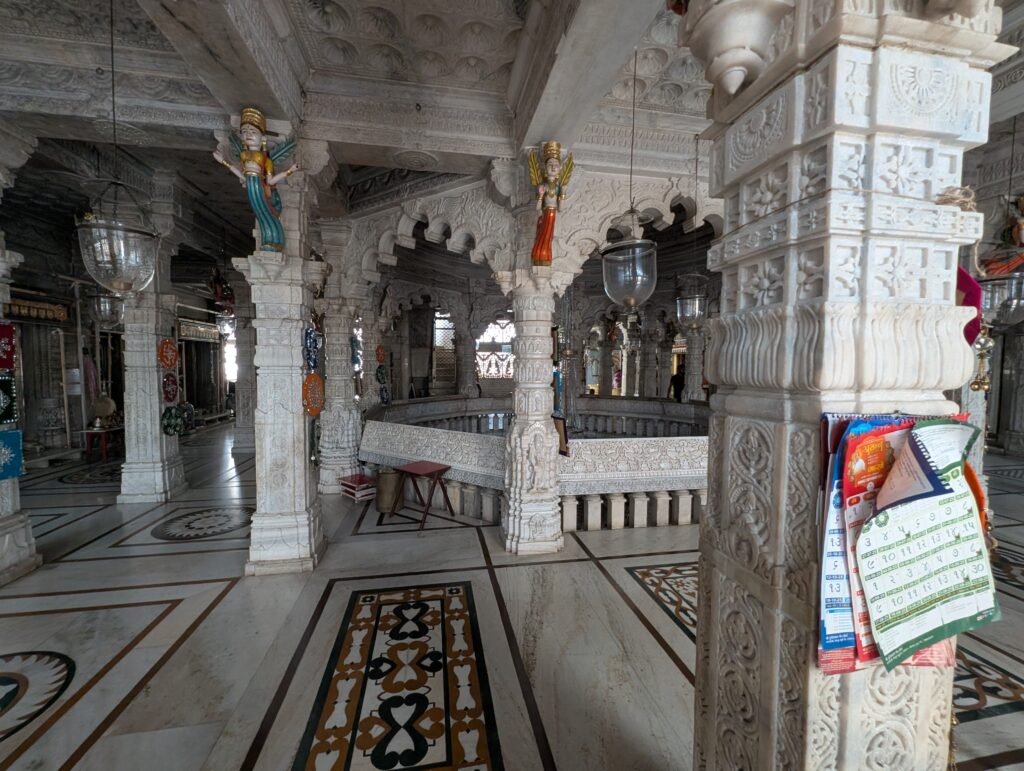
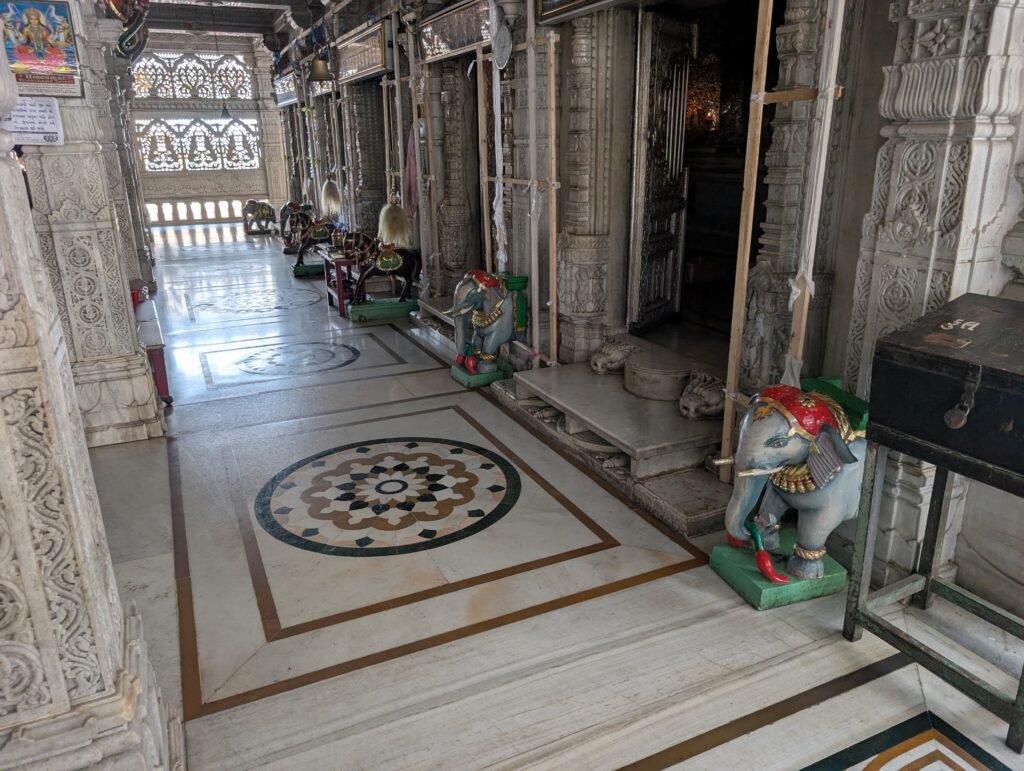

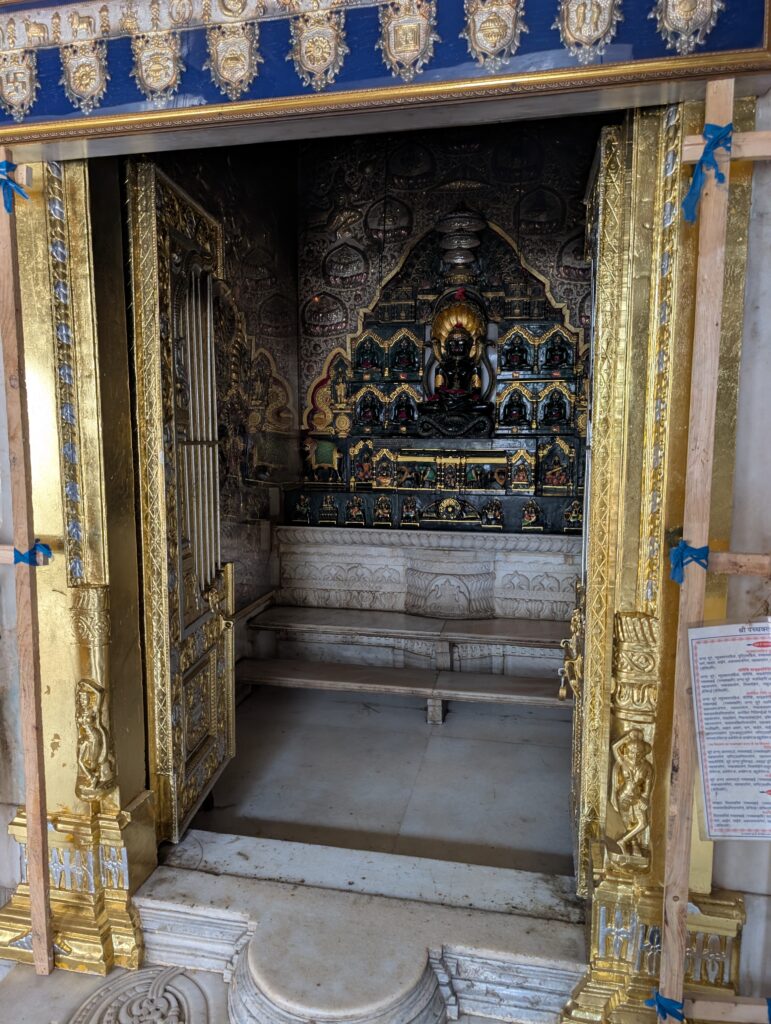
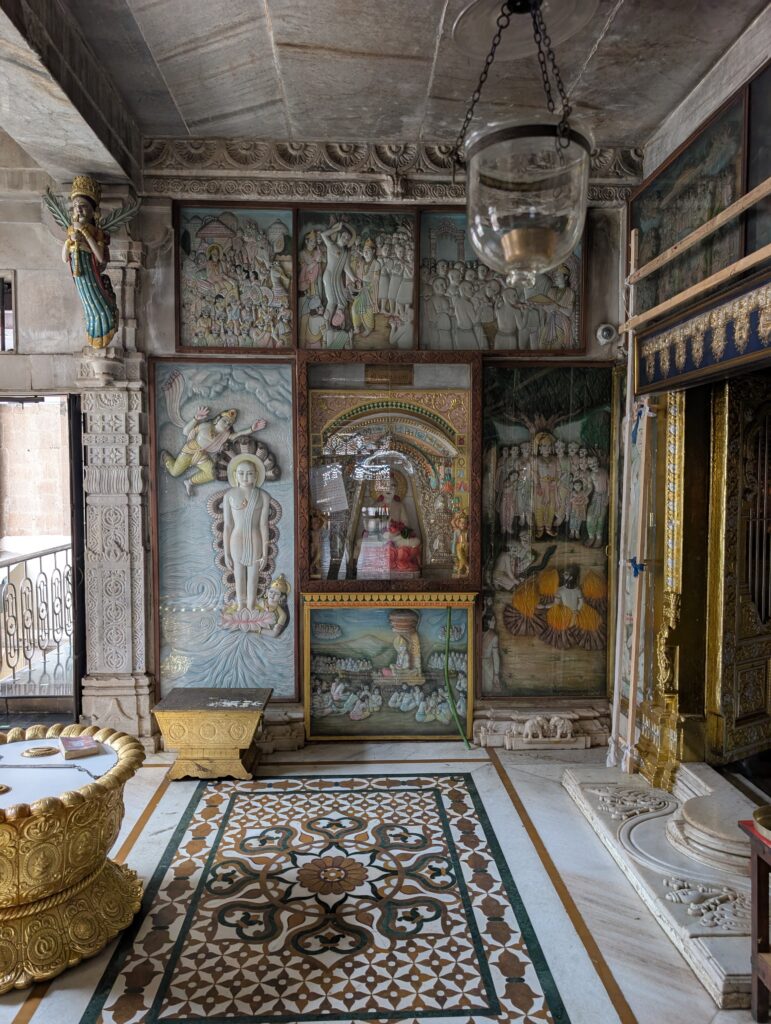

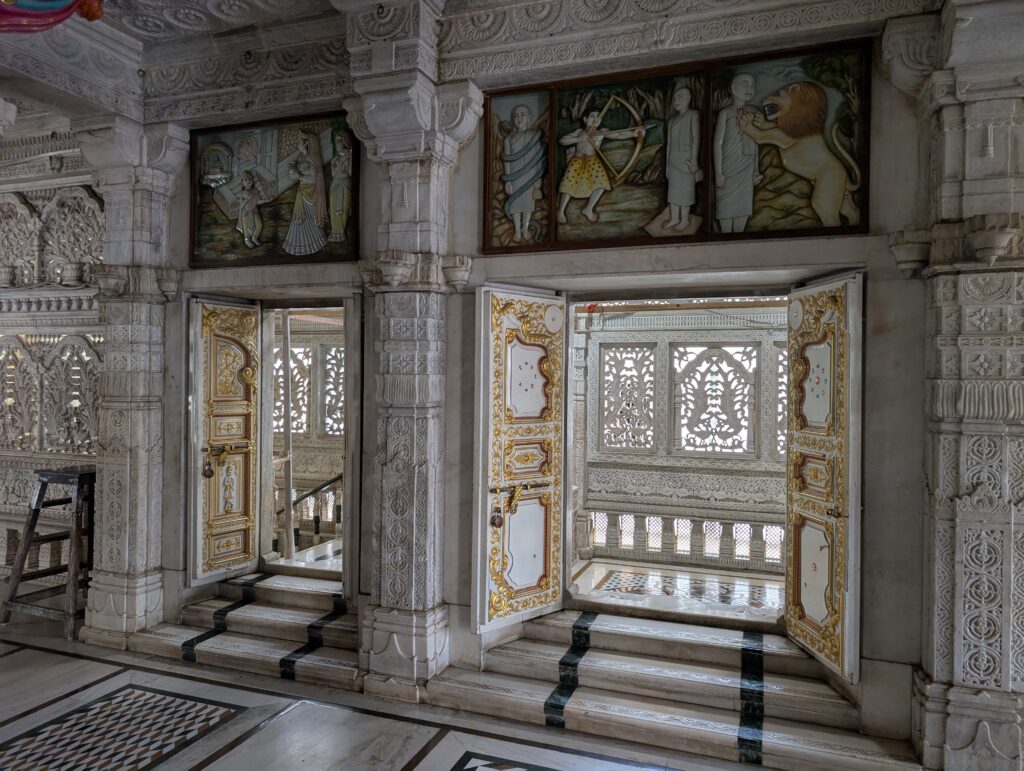
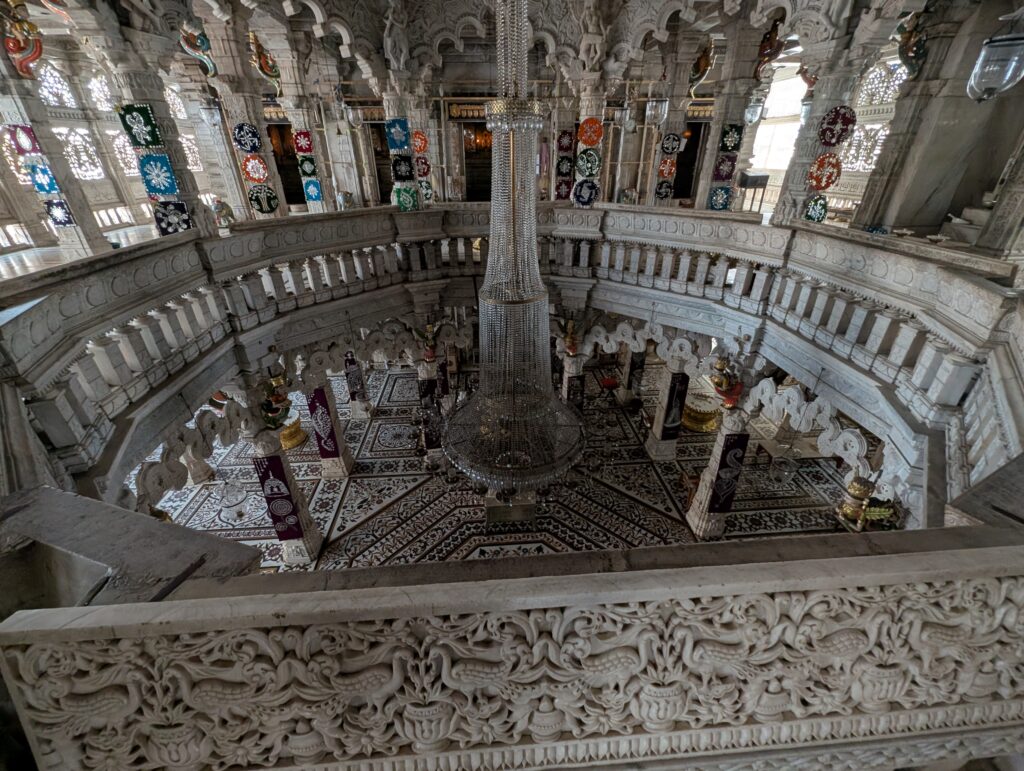
There was no good means of taking buses from the Jain temple to my next stop, so I just walked to Dhobi Ghat. Dhobi Ghat is purportedly the world’s largest outdoor laundry. The walk to Dhobi Ghat was over two miles and led through the what appeared to be a Muslim Quarter. There were several mosques, and the majority of people walking about were wearing Islamic garb. There were many hijabs and burkas, and many of the flat topped, cylindrical caps resembling the ones Caleb and I bought in Oman. There were quite a few men pulling long hand carts, loaded with delivery materials. The traffic on the city streets was as packed and chaotic as always. I decided when I needed to cross streets or pass through intersections, I would allow one of these hand carts to run interference for me. They were about 15-20 feet long, so it worked quite well. The only problem was that I had to keep up with them. They were on the move! Those little fellows loaded up with burdens were walking fast enough that it was quite difficult for me to keep up, even just carrying my camera bag.
As you might expect, it didn’t take all that long to visit Dhobi Ghat. It is just an outdoor laundry, albeit a very big one. There is a viewing platform, and I sat there watching families work together to ply their trade as babies cried around them, and as younger, non working family members looked on or sought entertainment in simple forms. One man held a baby as he worked. Everything was hung out to dry. Word is out that this is on the tourist agenda, so quite a few Mumbaiker vendors hover around the platform selling souvenirs and other kitsch. I was getting hungry after I stopped here, so I dropped into a cafeteria type restaurant and grabbed an inexpensive meal – either a biryani or something like it.
I next took the train up toward the last major stop in the tourist trail, the Dharavi Slums. Dharavi is supposed to be one of the largest slums in India, which likely makes it one of the largest in the world. They say the population density here is likely the highest in the world as well. Most tourists pay a guide to give them a tour. This seems a bit like people profiting from the poverty of others. Before I went, I had done some investigating to see if a guide was really necessary. Internet message boards weren’t much help. When others had asked how to see Dharavi do-it-yourself style, they got mixed recommendations. Some said it was unsafe. Others said it was less safe in a group. Other people who lived in the area said it wasn’t any more dangerous than any other poor neighborhood, and that it really just looked like a run down suburb. The vast majority of commentators – most likely people had never even been there – chimed in to criticize the ethics of touring slums.
In the end, I decided to catch a train to a stop near Dharavi, and then just walk through it like I had so many other slums and poor neighborhoods, and it turned out to be no more eventful or dicey than any other hike I had been on. There was a slum right next to my hostel, and I had just walked it the day before. Walking through Dharavi was little different, other than that it was a little bigger. I don’t think I would really recommend doing this. This is not because it felt dangerous or I had any ethical problem with walking through a poor neighborhood. I would not recommend it because it was truly just like walking through a poor neighborhood anywhere else – like a run down suburb. If you’ve seen a favela in Rio de Janeiro, or a slum anywhere else in India, you will have a pretty good idea of what one looks like.
(Continued)
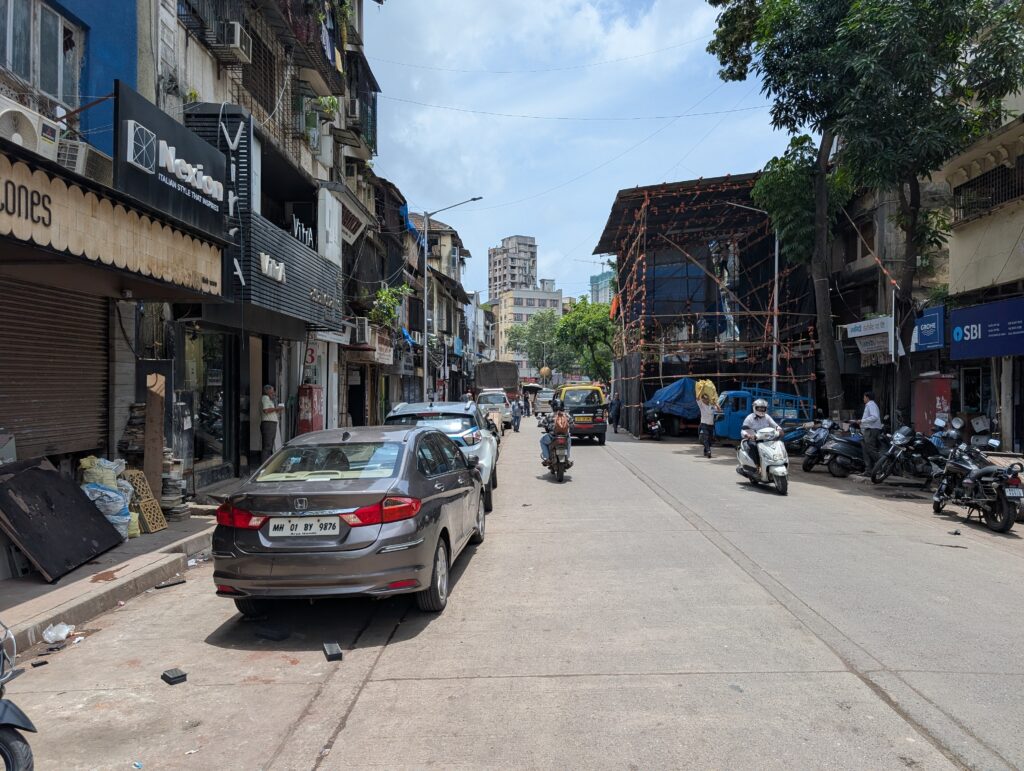



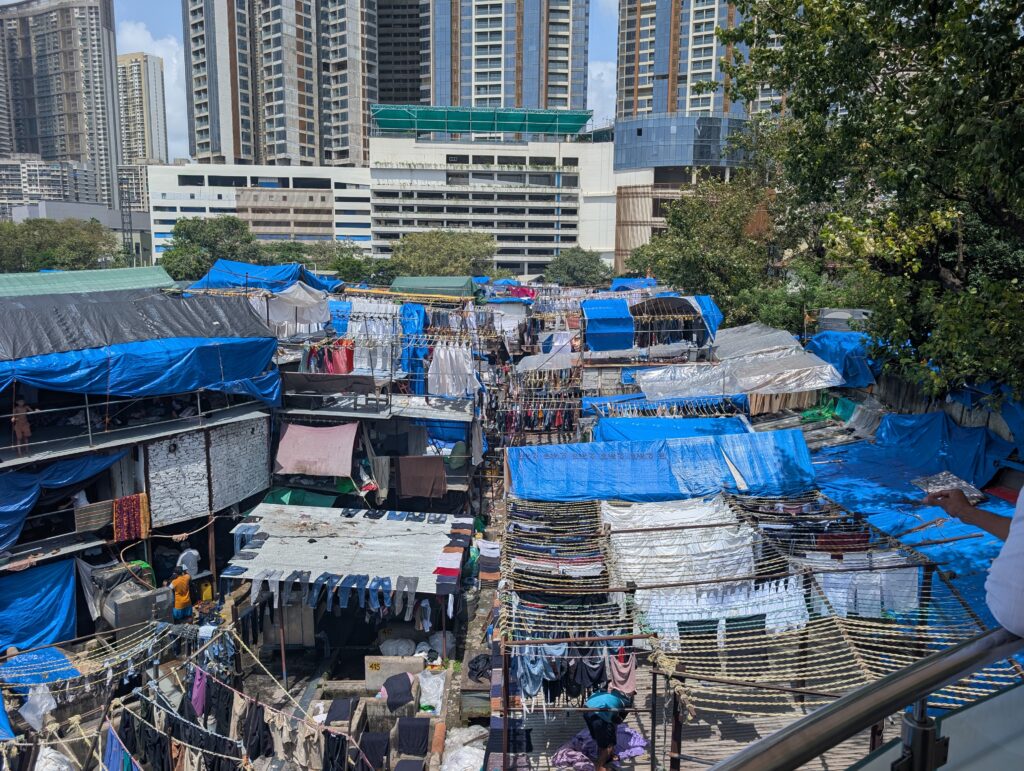
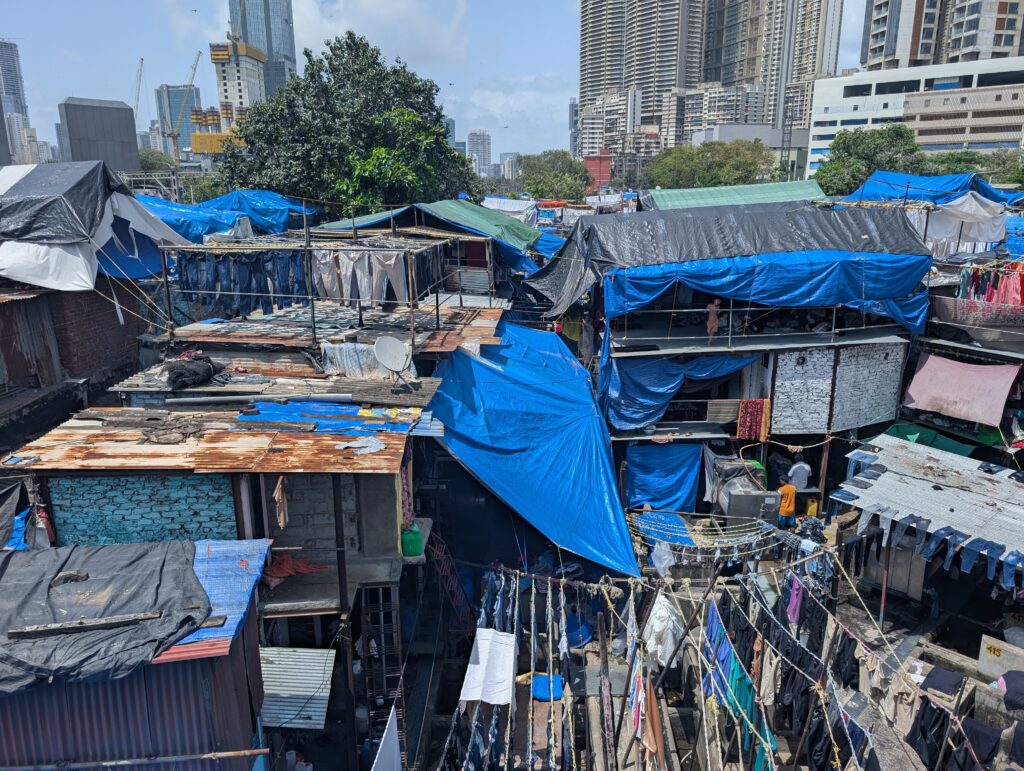
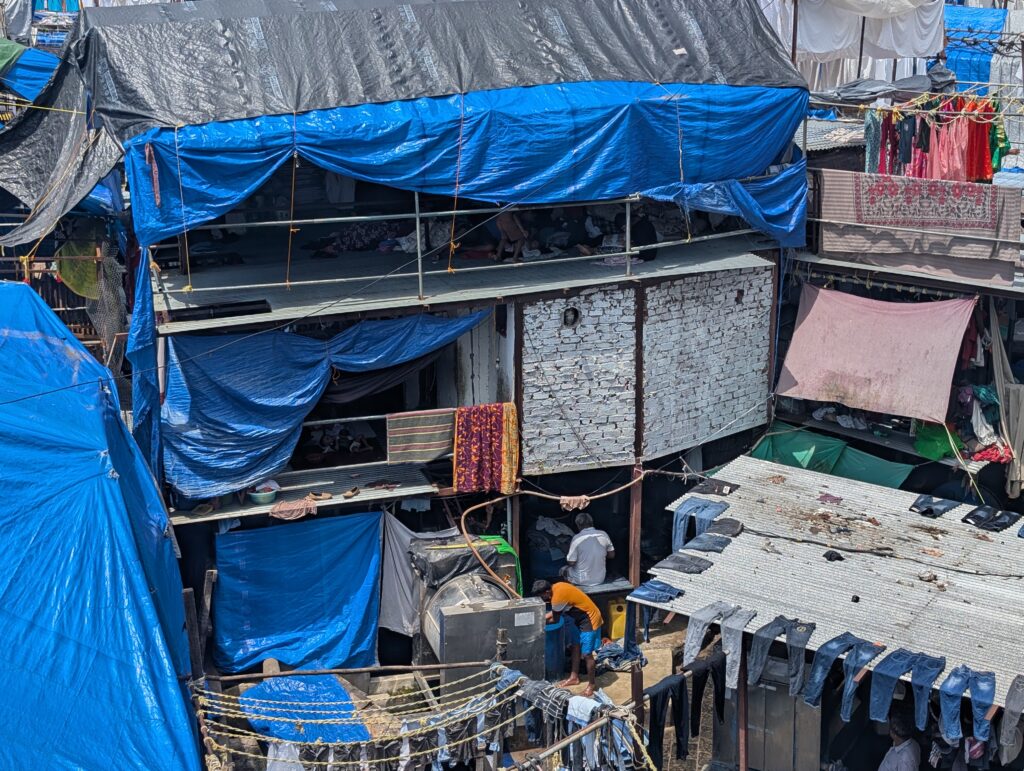
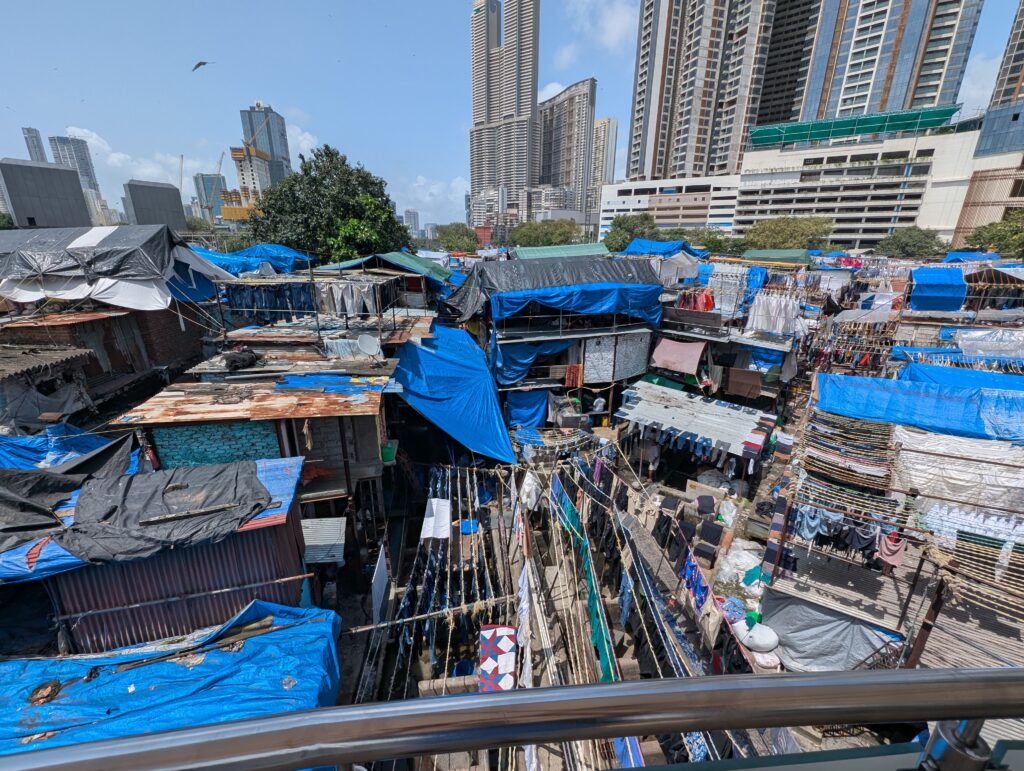

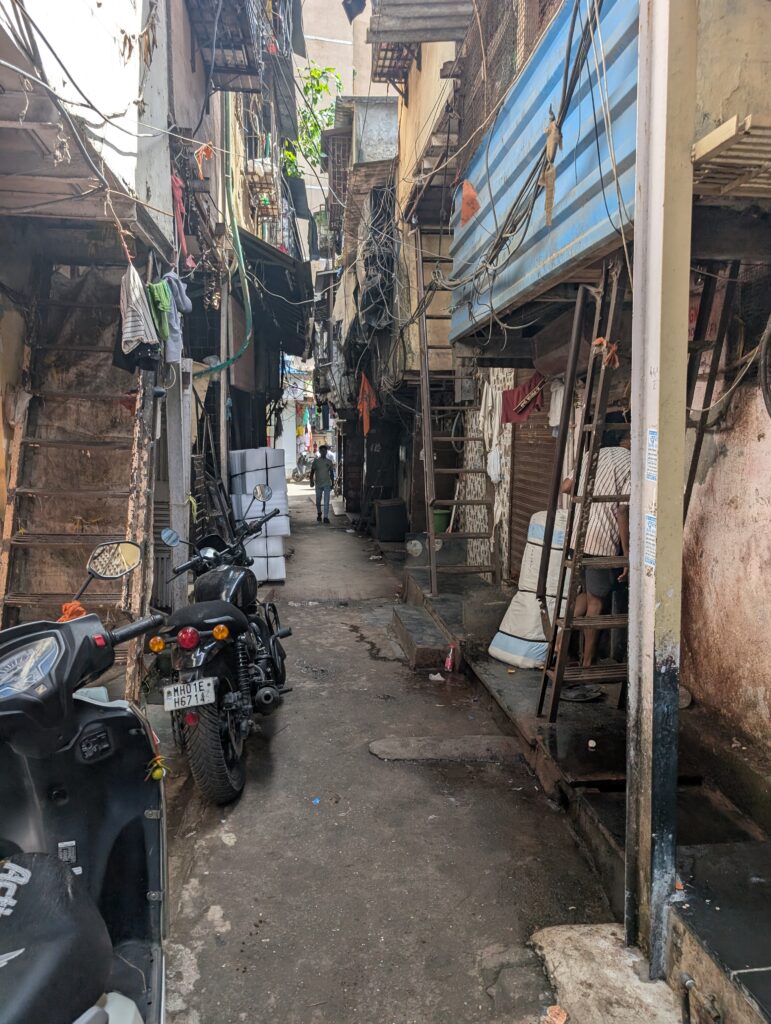
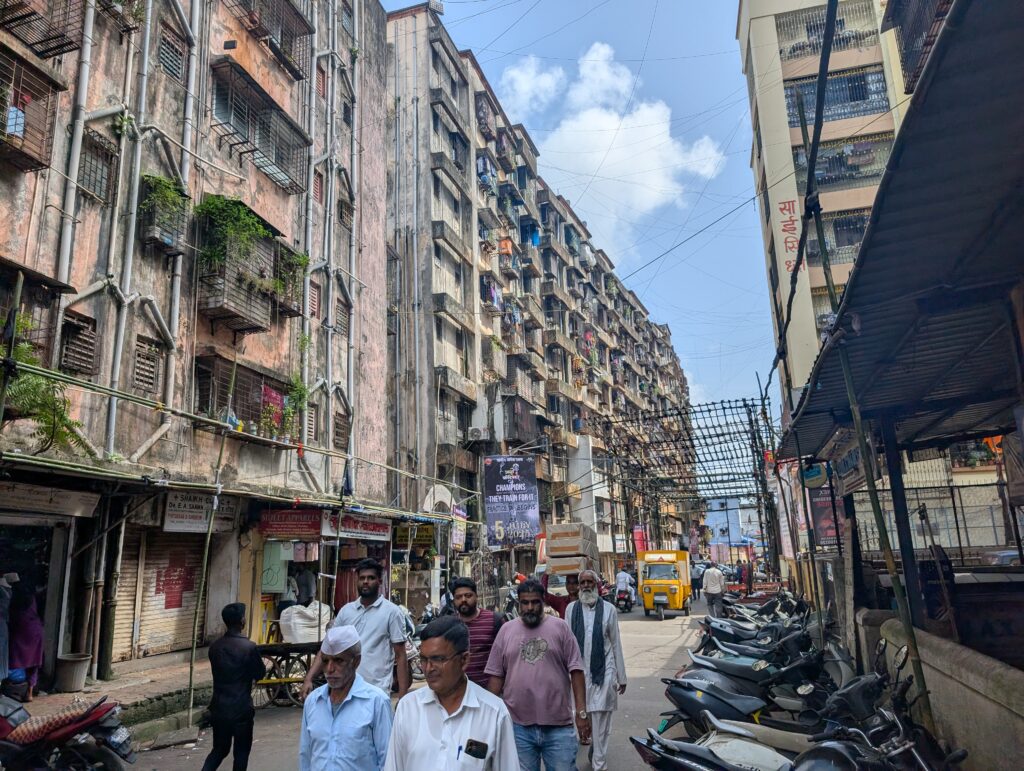
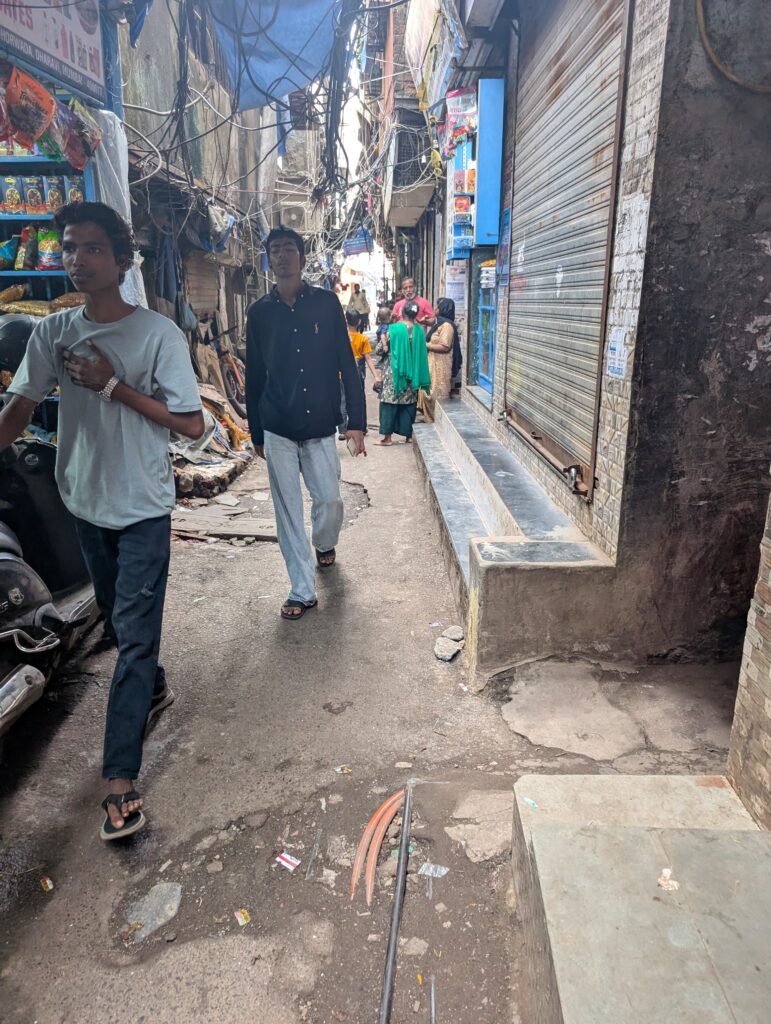
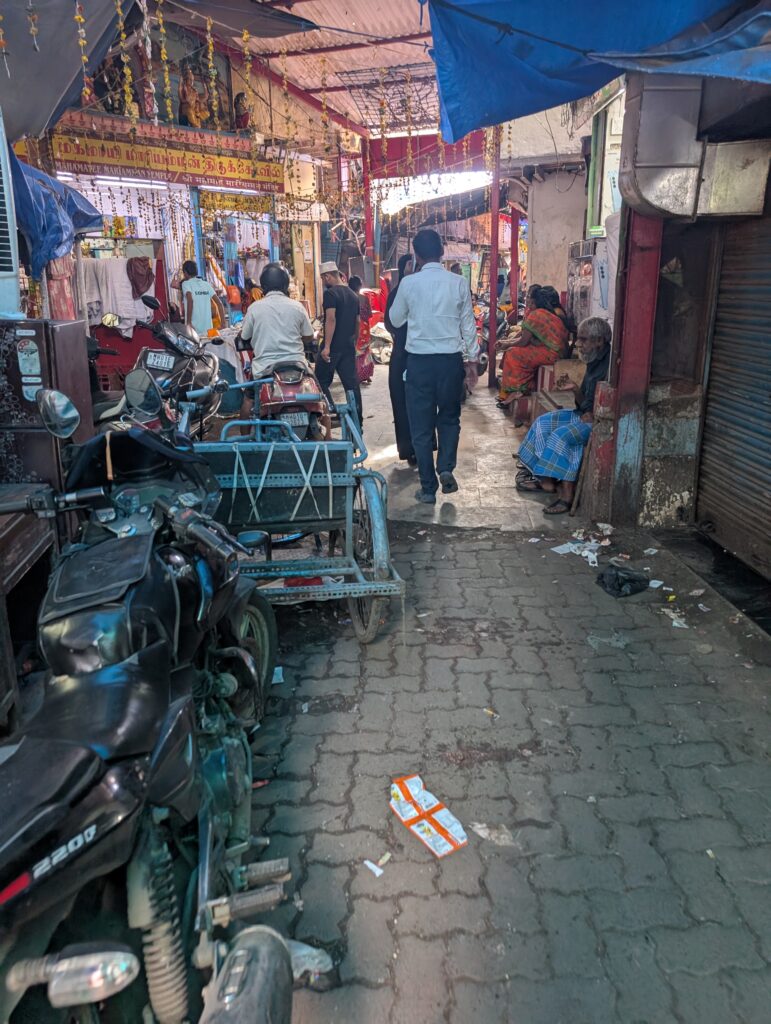

The Jain temple had been interesting, but I find it a little amusing that Dhobi Ghat and the Dhavari Slums are in all of the top ten lists of things for people to do when they visit Mumbai. It is a testimony to how despite its reputation as India’s most glamorous city, there just aren’t a lot of typical tourist attractions in Mumbai. So when you compile a list of amazing things to see, it’s best to use pencil. To make ten, you have to include laundries and slums. It goes to show you that Mumbai isn’t a major tourist venue.
Another delicious meal, and some bus rides and hiking later, I was back at the hostel for the night, content that I had seen what I needed to see in old Bombay.
The next morning, I collected my things and did some office work. I made a couple of phone calls and paid some bills. I enjoyed another hot breakfast. My flight to Bahrain did not leave until 9:45 p.m., so there was no reason to rush off to the airport. I ate my hot lunch, and did some writing and other work as I waited for the last of my clothes to dry. Sometime in the late morning, I got a call from Juhie, who indicated that she needed to talk to me about something, and could I meet her at a cafe. Something had fallen through at what was supposed to be her first day on the new job, and she needed something. After learning that she had been stranded once before and had to spend the night at a friends house, I had mentioned if she needed any assistance, she should call me if I was in town, and I’d escort her back to wherever she needed to go. I asked no further questions and walked to the cafe she had mentioned.
I wanted to help, then, and felt an obligation to go see what was the matter. Somewhere inside me, warning signs were going off. It crossed my mind that maybe all of the stories and interaction was just a lead in to some sort of plea for money. I like Juhie, and had really enjoyed getting to know her and offering her encouragement. Inside I said to myself, “Please don’t let this be what I think it is. Don’t let my stay in Mumbai end like this.”
It turned out that her boss had a funeral that day, and had told her very late not to come in. Her new beaux was doing his own business and hadn’t met up with her. She didn’t need anything at all, other than someone to talk to. I had just eaten the big breakfast an hour or two before, so I just sat in the cafe and listened. I offered advice when I could. I was sorry she had a little bump in her new job and relationship, but I was deeply relieved that it wasn’t what I thought it might be. I had nothing to fear, it was just someone who needed what I could give – a listening ear and some advice. So I enjoyed a couple more hours with my new friend.
Juhie went into her room to rest for a couple of hours. I folded my laundry and later went to get some ice cream. I sat out on the hostel front porch visiting with two other new friends, the young men who owned and operated the hostel. Eventually Juhie came back out and sat there, visiting with all of us. I shared my ice cream. The young men smoked. It rained a bit. We talked of places we had been, and places we wanted to go. We asked each other questions and shared our experiences about India and America.
Someone in the group asked me if I didn’t want to go see other things this last day in Mumbai. I had seen them. But what I was doing that day was the best part of my visit to India. I was talking to new friends. I was learning about people’s personal experiences. I was learning about culture, work, traditions, and the aspirations and dreams of young friends. The Elephanta caves were cool, but I had come to India looking for a personal family experience. This was what I liked best about India. India has a lot of wonderful, friendly people. It was the perfect way to close this chapter of my trip, sitting on the hostel porch talking to friends as we watched the rain fall.

